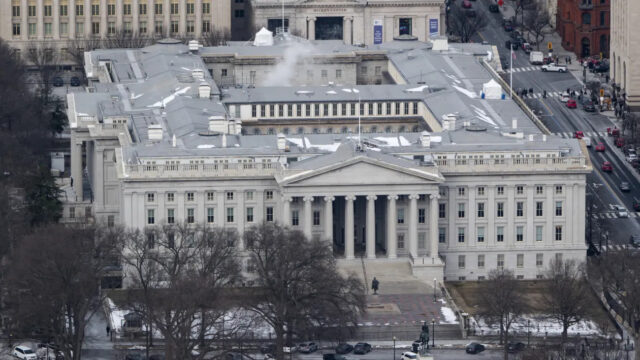
The United States is facing a significant rise in its budget deficit, highlighting ongoing fiscal challenges. In February 2025, the budget deficit reached $307 billion, marking a 4% increase or $11 billion compared to the previous year. Notably, this monthly deficit was nearly 2.5 times higher than the deficit recorded in January 2025, signaling accelerating spending concerns.
Key Fiscal Metrics for February 2025
- Total Receipts: $296 billion (9% increase or $25 billion from February 2024)
- Total Outlays: $603 billion (6% increase or $36 billion year-over-year)
- Net Deficit: $307 billion (4% increase from last year)
Fiscal Year 2025: Deficit Trends Worsen
For the first five months of fiscal year 2025, the total budget deficit climbed to $1.147 trillion, reflecting a 38% increase or $318 billion compared to the same period last year. Additionally, the year-to-date deficit has surged by 17% compared to fiscal 2024, raising concerns among policymakers about long-term financial sustainability.
Key Drivers of the Deficit Growth
- Rising Interest Payments on Public Debt
- The Treasury’s interest costs on public debt reached $478 billion, marking a 10% increase over the previous year.
- These costs now exceed military spending, which stood at $380 billion.
- Higher Social Security Expenditures
- Social Security payments climbed 8% year-over-year, reaching $663 billion.
- This increase reflects demographic shifts and rising entitlement costs.
- Federal Spending Growth
- Government spending outpaced revenue growth, despite the 9% rise in tax receipts.
- The $603 billion in federal outlays underscores increasing allocations for defense, social programs, and debt servicing.
Economic and Policy Implications
The growing budget deficit presents both economic risks and policy challenges for lawmakers. Rising interest costs on public debt limit the government’s flexibility in addressing economic downturns or funding new initiatives. Additionally, concerns over long-term fiscal health could lead to increased scrutiny from global investors and credit rating agencies.
Possible Solutions and Future Outlook
To manage the widening deficit, policymakers may consider:
- Spending Cuts: Reducing discretionary spending in non-essential areas.
- Tax Reforms: Implementing tax policy adjustments to boost revenue without stifling economic growth.
- Entitlement Program Adjustments: Modifying Social Security and Medicare structures to ensure long-term sustainability.
- Debt Management Strategies: Refinancing public debt to lower interest costs.
Conclusion
The rising US budget deficit highlights the urgent need for fiscal discipline and strategic policy decisions. With interest payments surpassing military spending and entitlement costs continuing to rise, the government faces mounting pressure to balance economic growth with responsible debt management. As fiscal 2025 unfolds, policymakers will need to navigate these challenges to ensure long-term financial stability while maintaining essential services and economic competitiveness.



